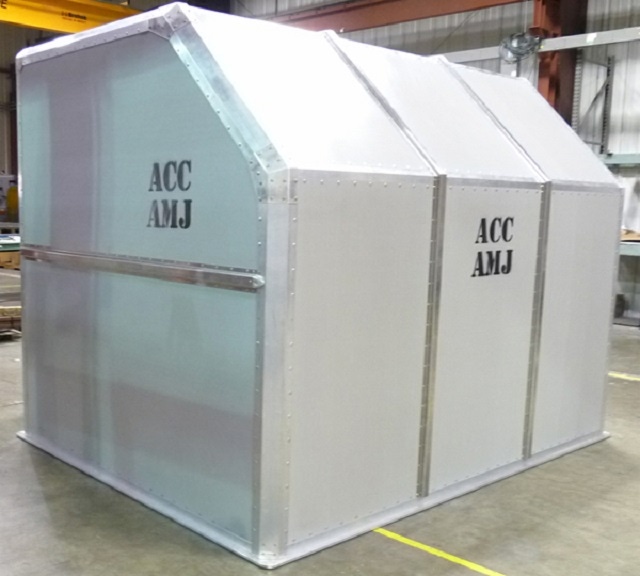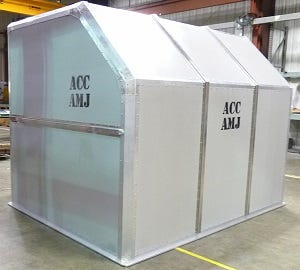The humble shipping container has been around in its current form pretty much since its American inventor Malcolm McLean came up with the idea in 1956. At a meeting of the American Association for the Advancement of Science held in Chicago last month, Stephan Lechner, of the European Commission's Joint Research Centre in Ispra, Italy, detailed how carbon fiber composites might revolutionize this tool of global trade.
March 31, 2014

The humble shipping container has been around in its current form pretty much since its American inventor Malcolm McLean came up with the idea in 1956. At a meeting of the American Association for the Advancement of Science held in Chicago last month, Stephan Lechner, of the European Commission's Joint Research Centre in Ispra, Italy, detailed how carbon fiber composites might revolutionize this tool of global trade.
|
Carbon composite containers could be readily scanned with low-power X-rays. |
|
Composite air container is 42% lighter than its aluminum equivalent. |
While a composite container might cost EUR6000 ($8300) versus EUR2200 ($3050) or a steel container, at a diesel fuel cost of EUR1.6 per liter ($8.40/gallon), the composite container would break even after the container has traveled around 120,000 km (74,500 miles) on account of their lighter weight: 1.2 tonnes versus 2.2 tonnes for a steel container. They would also be corrosion-resistant to boot.
Composite containers could also potentially be foldable, meaning they could be laid flat on their return to China. Further, they would also be more secure because they could be easily scanned without opening.
In 2006 America's Congress passed a law requiring all containers arriving from abroad into American ports to be scanned for illicit materials and illegal immigrants but the deadline for compliance continues to be pushed back due to technical issues: scanning steel requires high-power X-rays, or even gamma rays, which are expensive to generate and hazardous. Carbon-fiber composite containers, however, could be scanned with "soft" X-rays, which are easier to generate and use.
Lechner and his team are also proposing the embedding of vibration sensors in containers powered that would be powered by piezoelectric materials. These could be used to spot stowaways or shifting cargo. In this manner, they would be powered by the very vibrations they were designed to detect. Low-powered wireless networks, supplied with electricity in a similar manner, would then relay the info to port authorities. Lechner's team have proved that the idea works in principle. Other sensors could also be embedded to track a container across the seas, and red-flag suspicions trans-shipment patterns, for example. European authorities currently uncover something untoward in about one-fifth of the containers they flag as suspicious, highlighting the need for close monitoring.
Lightweight containers take to the air.
In a related development, TenCate Advanced Armor USA (Newark, OH) has signed a teaming agreement with Air Cargo Containers, LLC (Phoenix, AZ) to manufacture lightweight air cargo containers. The fully-certified, lightweight, composite air cargo carriers have a tare weight of 480 lb. (218 kg) or about 350 lb. (159 kg) less than competing aluminum containers, a 42 percent weight savings.
Air Cargo Containers was granted Technical Standard Order (TSO C90d) certification for its lightweight-composite AMJ model Unit Load Device (ULD) in December 2013. It is the first all-composite container to receive this certification by the US Federal Aviation Administration (FAA). It is constructed of proprietary composite side panels and floor panel, built around an aerospace grade aluminum frame, for lightness and durability as well as improved maintenance characteristics and flame retardant capability. The composite material and assembly of the entire container will be carried out by TenCate Advanced Armor.
The lightweight composite container has delivers a 42 percent weight savings. In addition, it incorporates a proprietary and patented roll-up door with destruction proof side glides and lock down features for safety in operation.
You May Also Like




